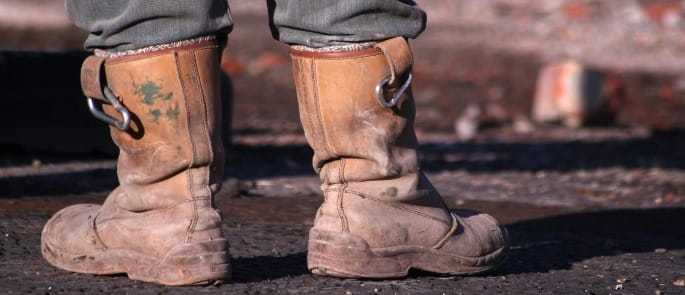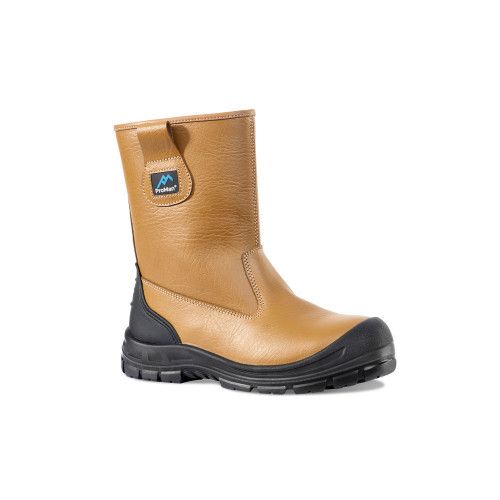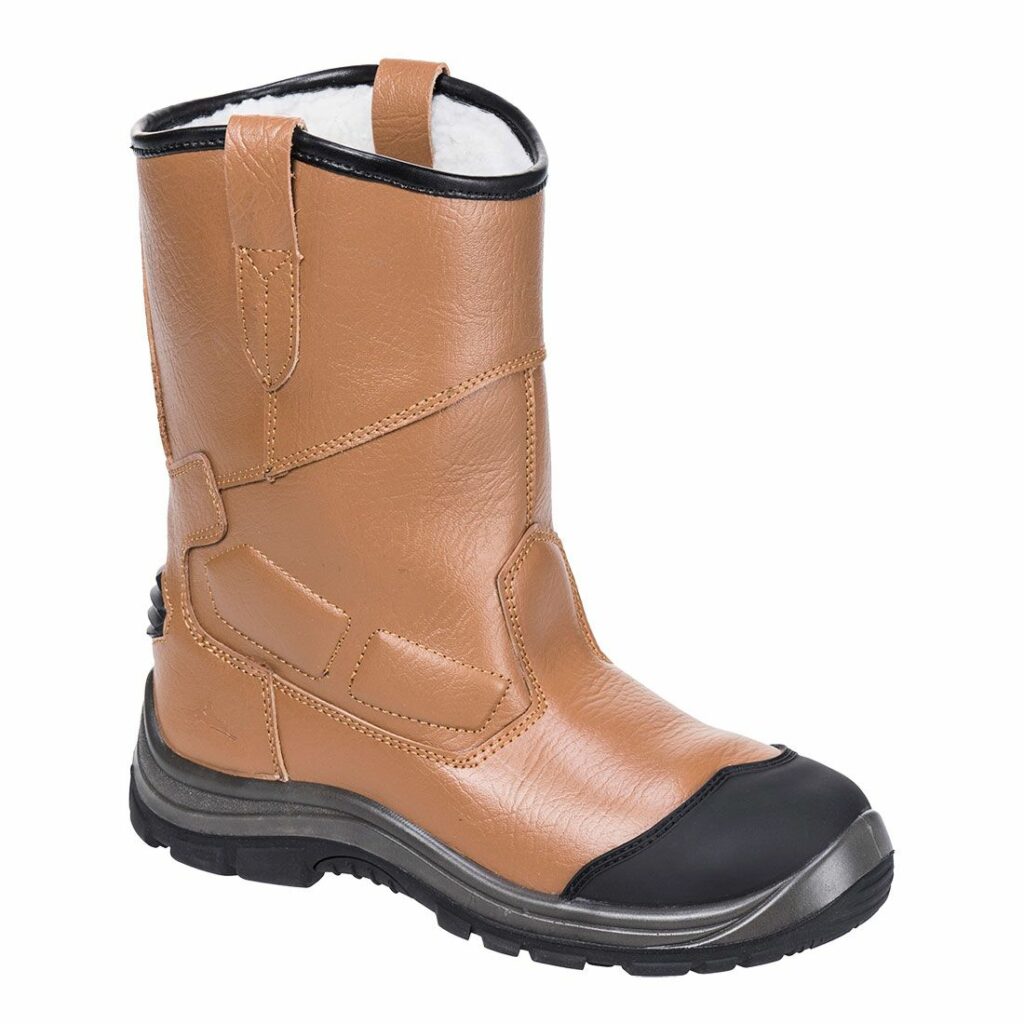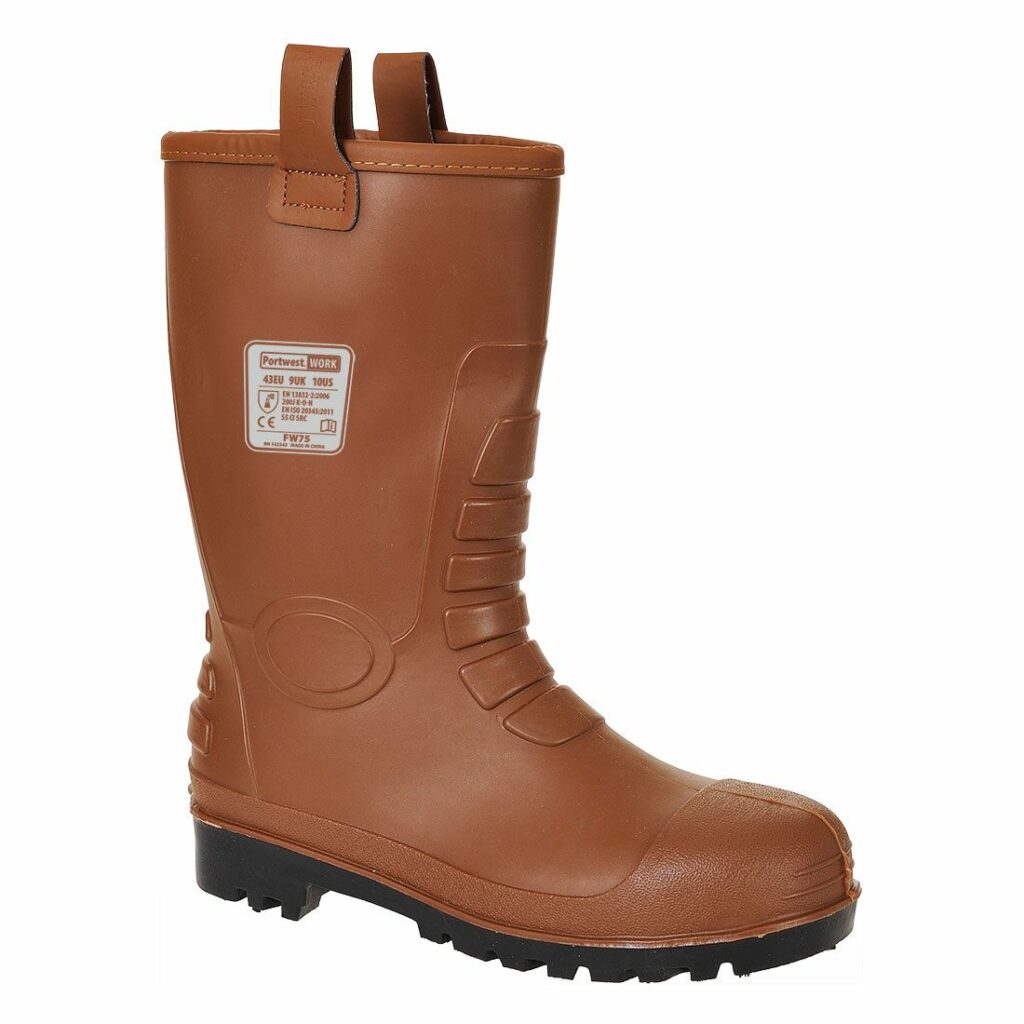Are Rigger Boots Banned On Construction Sites?
Rigger boots are an attractive option for those who work on a construction site. They are a slip-on safety boot between a lace-up and a wellington. Compared to traditional work boots they have a looser fit and their added waterproofing makes them an appealing choice. However, are riggers safety boots banned from being worn on construction sites?
- Page Contents
- What Are Rigger Boots Used For?
- The Risk of Wearing Rigger Boots on a Construction Site
- Are Rigger Boots Banned?
- How do I Choose the Best Boots?
What Are Rigger Boots Used For?
Rigger boots were originally designed for oil rig workers in danger of falling into large bodies of water - hence the name "rigger" boots. They needed a safety boot that is easy and fast to remove in an emergency situation.
They are loose fitting safety boots with toe cap protection, and usually with anti-slip soles. Their wide calf allows coveralls to be tucked in to help prevent snagging.
Outside of oil rigs, these boots have been adopted across various construction industries and roles - but they are not always appropriate.
The Risks of Wearing Rigger Boots on a Construction Site
Construction companies (and the HSE) have found that their workers are at an increased risk of foot and ankle injury when they are wearing rigger boots. This style of PPE footwear offers no protection against the rolling of an ankle, so sprains and breaks on uneven ground are common. They also offer no mid-sole protection against penetration, so injuries occurred from standing on nails and screws can occur.
It is a requirement on construction sites to wear safety boots that are CE certified. This means the safety footwear complies with the PPE regulations for site safety boots. Any rigger boots sold by XAMAX® will conform to this standard.
But it is important to wear the correct safety boot depending on the job and work you do. For example, you would not wear a typical safety boot when pouring cement as you may experience cement burns. Instead you may choose safety wellington boots.
Are Rigger Boots Banned?
Rigger boots are not banned by any large governing body, but they may be banned on individual sites or by specific construction companies. The best course of action would always be to check with an employer or site manager for specific safety polices.
Although there has not been a regulatory change, bigger firms have banned rigger boots on the construction site. Policies have changed for certain roles but it has not become more far reaching.
How do I Choose the Best Boots?
It is important to choose safety boots that are comfortable, durable, and slip resistant. Common accidents within the workplace are slips, trips, and falls. When working on construction sites that have uneven surfaces and hazardous conditions, you are in danger of more risks.
You may have other considerations too, such as capped toes, anti-static properties, waterproofing, ESD compliance, and a good outsole. Outsoles can protect you from heat, chemicals, oil, gas, debris, marking, and slipping.
For summer, you might want a safe, but lighter pair of boots to keep you cooler, and for winter you may want a fur lined pair. Remember that site safety boots need replacing every 6-12 months or when they are in disrepair. Your employer will provide safety boots.
If you order safety boots for your company, choose a few models that vary, and allow your employees to try on pairs and find the boots that work for them. If your worker is comfortable, they are more likely to comply. Make sure you update your health and safety policy regularly to identify all hazards and figure out what boots will help protect against those hazards too.

Remember to take good care of your boots and clean them regularly according to the manufacturer’s instructions. You may wish to have insoles and wear speciality socks to make them more comfortable. Be sure to fasten or lace up your shoes in the correct way to maximise safety too.
When you are comparing the different safety boots, you can see that Riggers do not provide the same ankle support as safety boots. The ankles on Riggers are flimsy making the ankle prone to injury.
However, the best policy is always to be careful when walking around on site. Many workers wear Riggers as they are considered ‘stylish’ and easy to pull on. Overall, foot safety should be considered the main priority.
If you have a worker who needs both Riggers and Site Safety Boots, make sure this person has access to both types of boots. Riggers are not a catch-all shoe for safety. Educate all workers on the risks of wearing the wrong footwear on site so that lack of knowledge is not catching anyone out or causing accidents.
Although Riggers are not banned on most sites, it is not recommended your workers wear them - just in case.
Where to Buy Rigger Boots
With all the above in mind, if you decide that Rigger Boots are the choice for you, you need to ensure the footwear you buy is compliant with EN ISO 20345:2011, and the specific safety ratings of the boot meet your specific job requirements.
As a BSiF Registered Safety Supplier, XAMAX® only sell compliant safety footwear and PPE, so there is no better company to supply you than us. You can find a carefully selected list of fully compliant Rigger Boots to buy for various applications here.
Conclusion
Although Rigger boots are not legally banned, they may be prohibited on certain building sites and construction jobs. These workwear boots are stylish and easy to pull on however riggers do not provide sufficient ankle and foot support which causes a higher risk of injury.
Don't just consider the toes and midsole when choosing safety boots: ensure your entire foot and ankle are protected too.
- How Long Does PPE Last? (Probably Not As Long As You Think) - 12th March 2025
- BSIF Issues Urgent Warning: 90% of PPE from Non-Registered Providers Fails Safety Tests (2025) - 10th February 2025
- Understanding UK Safety Standards for Respiratory Protection - 14th October 2024



